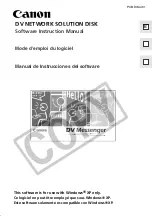
Glossary
333
❚❘❘
value
One of three parameters in the HSV (Hue, Satura-
tion, Value) color space. It describes how dark or
light the color is.
view dependence
In a view-dependent global illumination algorithm,
moving the camera requires recomputing most of the
image rendering.
view frustum
The region of 3D space visible from a given camera
or observer. This region is a rectangular pyramid
with the apex at the observer’s eye. The near and far
clipping planes cap the top and bottom of the pyra-
mid respectively.
view independence
In a view-independent global illumination algo-
rithm, the camera can be moved and an image ren-
dered with minimal computation.
visibility
The process of determining if there are any objects
between two points in an environment. Used by the
radiosity system to determine how much light gets
from one surface to another and by the ray tracer to
determine whether a point on a surface is in the
shadow of a luminaire.
visible spectrum
The range of electromagnetic radiation (380 nm to
780 nm) to which the eye is sensitive. Often referred
to as light.
white point
The brightest white that can appear on a monitor.
The color of white points varies among monitors.
whiteness constancy
The tendency of the eye to perceive white surfaces as
white even under lights of different colors.
workplane
A surface in the scene used to collect illumination
samples for lighting analysis.
zoom
A change in the camera’s field of view (or focal
length). The camera does not move.
Summary of Contents for LIGHTSCAPE
Page 1: ...SULO 4 31 93 36034333308355 LJKWVFDSH...
Page 18: ...NOTES 10...
Page 110: ...NOTES 102...
Page 136: ...NOTES 128...
Page 166: ...NOTES 158...
Page 176: ...NOTES 168...
Page 202: ...NOTES 194...
Page 210: ...NOTES 202...
Page 248: ...NOTES 240...
Page 294: ...NOTES 286...
Page 308: ...NOTES 300...
Page 316: ...NOTES 308...
Page 324: ...NOTES 316...
Page 342: ...Glossary 334 Lightscape...
Page 360: ...Index ix 352 Lightscape...
Page 362: ......
















































